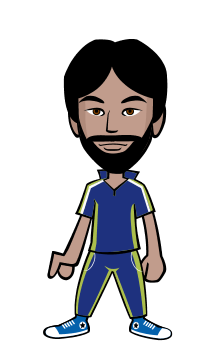Man has invented means to make him free from worries and make him happy. Performing art is also a part of this effort. People of the sub-continent (Indo-Pak – further sub-continent will be referred as to Indo-Pak) performed drama. It was a fine art. It was like a religious act which was performed on stage. Hindus called this drama as Ram Leela. Later it was also used as a means of pointing at and criticizing social evils. The subject matter which could not be said straightforward, it was told by means of satire.
Men with means would spend money to listen music and songs, which poor could not afford and avail. Scientific inventions made possible the approach of people having relatively lesser strength to own these means to have for happiness and joy. Earlier only wealthy people could afford to invite singers to listen music and songs from them. Now, with the invention of audio and video recording many more people could take benefit, because it is much cheaper than to invite singer and enjoy live programs.
The “Dastan Go” - Storytellers were also very popular in the recent past. They not only used to tell stories, but they also portrayed plots and actions of characters. Very often they delivered dialogues too, which reflected the full effect of the situation of the story. “Bahroopiya” – an imitator was also a part of performing art and was very popular among all class of people. Puppet shows were also the source of entertainment. Its cost was lesser. Modern theatre is very popular among people. It played important part in performing art. Even very learned people took part in theatre. It is an important kind of literature.
In old times, there used to be bioscope-wala. He had a box in which few magnifying glasses were fixed in round windows. A number of pictures were pasted on a role of paper wrapped in two rods. A handle in each rod was fitted on the upper side of the top of the box. When the handle was moved in circular motion, the picture appeared to be moving. The bioscope-wala gave commentary about pictures too. Children used to pay a paisa and enjoy it through glass window.
The inventions of movies overshadowed all these types of performing arts and means of entertainment. People were thrilled to see still pictures moving as if they were alive. Dada Sahab Phalke produced the first film named Raja Harishchanda in the year 1913 in Bombay. It was first full length film of the sub-continent. D.G Phalke directed the film and D.D. Dabke,Salunke Balachandra and D.G Phalke acted in it. No woman was ready to act in it so men performed the role of woman character in the movies. This was a silent movie. Sound was also added to the movies after a few years. Alam Ara was the first talkie film of the sub-continent which was produced by Imperial Film Company. Only some part of it had sound in it. Ardhir Irandi was director. Firozshah Mistry and B.Irani were music directors. Master Vithal, Zubeida,Jillo and Prithviraj Kapoor acted in it. The film also had songs. Color was also added to the film later on. Film Aan (1952) was produced and directed by the legendary film Director Mehboob. Aan was filmed on 35mm black and white negative. It was then enlarged to 55mm size. Full film was then printed in the Technicolor. So, Aan was the first full length film made in color. Afterwards films were also made in Gevacolor too. Some short films were made by 3D camera but these were made mostly in Western countries. Guru Dutt produced a film Kaaghaz ke Phool in 1959. Cinemascope technique was used in shooting the film. Kaaghaz ke Phool was the first Cinemascope film of the Sub-Continent.



